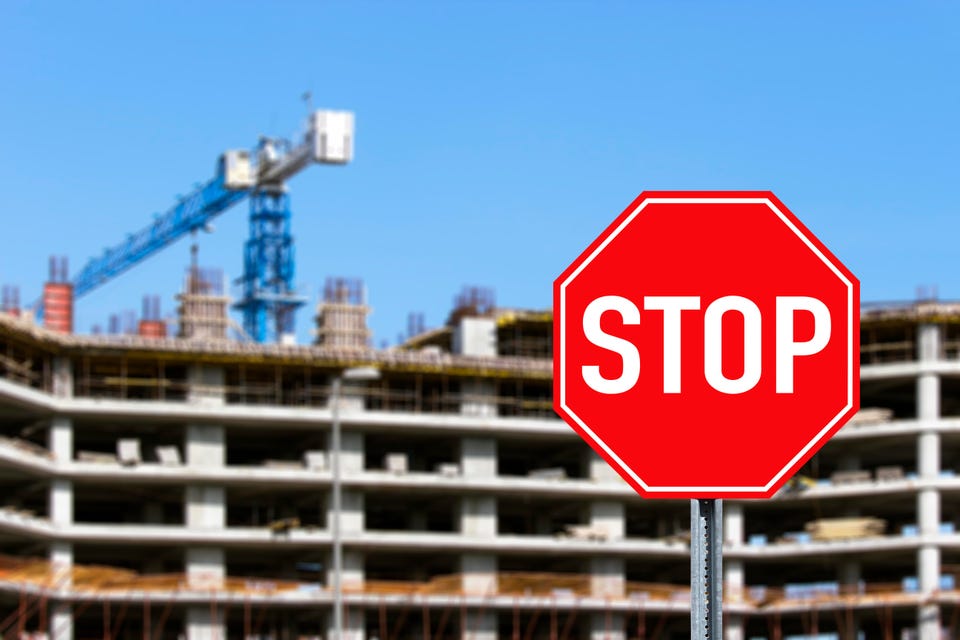Consumer Tech Why Building And Expanding Office Spaces Are Now On A Wait And See Basis. . .
Tim Bajarin Contributor Opinions expressed by Forbes Contributors are their own. I write about tech industry’s impact on the PC and CE markets. New! Follow this author to improve your content experience.
Got it! Jul 19, 2022, 10:00am EDT | New! Click on the conversation bubble to join the conversation Got it! Share to Facebook Share to Twitter Share to Linkedin Office space construction is paused by some companies as employees voice their desire for . . .
[+] pandemic-sparked flexibility. getty Over the last two years, one of the more puzzling developments in Silicon Valley has been the aggressive new office building expansion, even though the pandemic kept people from returning to offices. At the height of the lockdown, construction everywhere was put on hold.
But over the last 18 months, many Silicon Valley companies have restarted their building projects. The biggest project will be called the Google Village, in the heart of downtown San Jose. This expansion will be a planned community of enormous magnitude that will reshape the city center of San Jose, CA.
According to San Jose Spotlight , a local magazine- “The multi-billion-dollar development, which will take about a decade to complete, will cover 80 acres near Diridon Station—and Google anticipates up to 25,000 people working in its downtown offices. The campus will feature 7. 3 million square feet of office space, 4,000 residences, 15 acres of parks, and a large community center.
Roughly a quarter of the housing is slated to be affordable. ” Some have questioned Google moving forward with this expansion, given that many employees don’t want to return to their offices today. However, Google is confident that it will continue to grow and, over time, will need these new offices to handle its aggressive growth plans.
MORE FOR YOU Google Issues Warning For 2 Billion Chrome Users Forget The MacBook Pro, Apple Has Bigger Plans Google Discounts Pixel 6, Nest & Pixel Buds In Limited-Time Sale Event Apple, Facebook, and other high-tech companies have new offices in the works, too, and at least currently, those office expansion plans are still in place. For the tech industry in general, it suggests that these companies continue to see growth and need more office space to handle the potential workers they will need in the future. On the other hand, Amazon has decided to pause work on six new U.
S. office buildings to weigh hybrid work needs. According to Business Times , “AMAZON is pausing the construction of six new office buildings in Bellevue and Nashville to reevaluate the designs to suit hybrid work, the tech giant said on Friday (July 15).
The pausing and delay of construction will not affect Amazon’s hiring plans, a company spokesperson said, reiterating the firm’s proposal to create 25,000 jobs in Bellevue and another 5,000 in Nashville. The pandemic has significantly changed how people work. Our offices are long-term investments and we want to make sure that we design them in a way that meets our employees’ needs in the future,” said John Schoettler, vice president of Global Real Estate and Facilities at Amazon.
” A common thread within big tech companies is the expectation of aggressive growth plans and the need to house thousands of employees in the future. However, while some companies are moving ahead to expand, Amazon has chosen to pause its plans for new buildings. While Google, Apple, and some other big tech companies are moving ahead with their building plans, the other common thread is that the office buildings they design in the future must consider hybrid computing needs.
In talking with two major tech companies who are in expansion mode, they see the need for more on-site collaboration areas to accommodate on-demand team meetings and special on-site assemblies. Some companies are holding out that, over time, they can entice people back into their offices on a full-time basis. However, they are realistic that the work-at-home concept has dramatically changed the workforce for most white-collar workers.
That most likely means fewer offices or individual workstations and instead larger conference rooms, more extensive areas for collaborative team meetings, and spaces for larger group-level meetings. Much has been written about how the pandemic forced millions of workers to work at home and how in most cases, these people were just as productive, if not more productive. Now that these workers have tasted this work flexibility, they have resisted the regimented business office routine and want more flexible working arrangements.
Given that these big tech companies see strong growth in their future that will demand thousands of more workers, it is wise of them to rethink their real estate investments. However, they also must tailor their office designs to meet their employees’ current and future needs. The office designs of the past will not work in an age where workers demand flexibility and their return to the office full time is now highly unlikely in the future.
Follow me on Twitter . Check out my website . Tim Bajarin Editorial Standards Print Reprints & Permissions.
From: forbes
URL: https://www.forbes.com/sites/timbajarin/2022/07/19/why-building-and-expanding-office-spaces-are-now-on-a-wait-and-see-basis/



